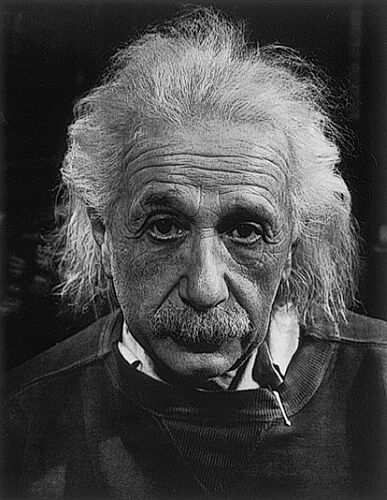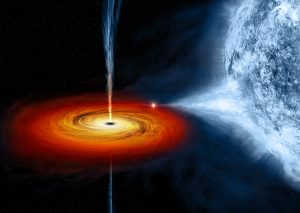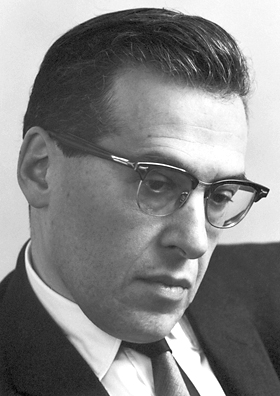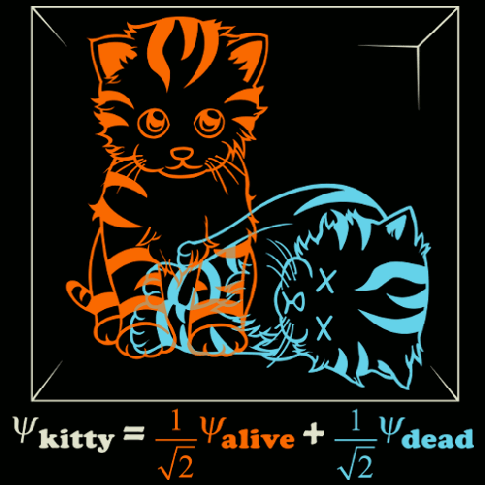In 1935 Erwin Schrödinger illustrated a hypothetical experiment to show that something is incorrect with the traditional analysis of Quantum Mechanics.
One can even set up quite ridiculous cases. A cat is penned up in a steel chamber, along with the following device (which must be secured against direct interference by the cat): in a Geiger counter there is a tiny bit of radioactive substance, so small that perhaps in the course of the hour one of the atoms decays, but also, with equal probability, perhaps none; if it happens, the counter tube discharges and through a relay releases a hammer which shatters a small flask of hydrocyanic acid. If one has left this entire system to itself for an hour, one would say that the cat still lives if meanwhile no atom has decayed. The [wave-function] of the entire system would express this by having in it the living and dead cat (pardon the expression) mixed or smeared out in equal parts. [1]
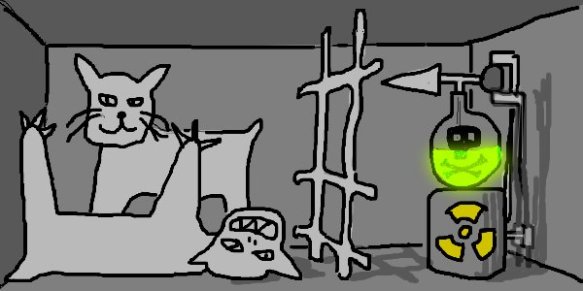
Schrödinger’s cat quickly emerged as the most famous example of what is now called the measurement problem, “the most controversial problem in physics today”, [2] with more than 30 youtube video clips devoted to it. (Less well-known is that Einstein suggested a similar bomb experiment to make the same point, stating “a sort of blend of not-yet and already-exploded systems [can not be] a real state of affairs”. [3])
The measurement problem appears because QM does not offer a picture of reality when no one is looking. Instead we have particles that are neither here nor there, states that are in superpositions, and equations that merely provide probabilities. Most physicists strongly believe that these superpositions are real, and several even acknowledge that the cat can be both half dead and half alive. Then there are physicists who opt not to talk about reality.
I am a positivist who believes that physical theories are just mathematical models we construct, and that it is meaningless to ask if they correspond to reality, just whether they predict observations.— Stephen Hawking. [4]
Something was clearly missing.
That something came along later in the form of Quantum Field Theory— a theory that does offer a picture of reality, even when no one is looking. However there are numerous explanations and understandings of Quantum Field Theory, while some physicists reject it completely. For instance, N. David Mermin wrote in Physics Today, “I hope you will agree that you are not a continuous field of operators on an infinite-dimensional Hilbert space, [5] and Meinard Kuhlmann wrote in Scientific American, “quantum field theory … sounds like a theory of fields. Yet the fields supposedly described by the theory are not what physicists classically understand by the term field”. [6]
Among those who accept Quantum Field Theory, most observe Richard Feynman’s method based on particles and virtual particles, while Julian Schwinger’s (and Sin-Itiro Tomonaga’s) version, which is based only on fields, is much less well-known. [7] Surprisingly enough, Frank Wilczek discloses that Feynman later changed his mind:
Feynman told me that when he realized that his theory of photons and electrons is mathematically equivalent to the usual theory, it crushed his deepest hopes … He gave up when, as he worked out the mathematics of his version of quantum electrodynamics, he found the fields, introduced for convenience, taking on a life of their own. He told me he lost confidence in his program of emptying space. [8]
Although both approaches lead to the same equations, the physical pictures are very different. It is Schwinger’s Quantum Field Theory that we refer to in this article, but since this version is so little known, we need to first give a brief description.
Definition of field. A field is a property of space. This idea was proposed by Michael Faraday in 1845 as an explanation for electric and magnetic forces. However the concept that space has properties was not easy to accept, so when James Maxwell predicted the presence of EM waves in 1864, an ether was invented to carry the waves. It took many years before the ether was dispensed with and physicists approved that space itself has properties:

